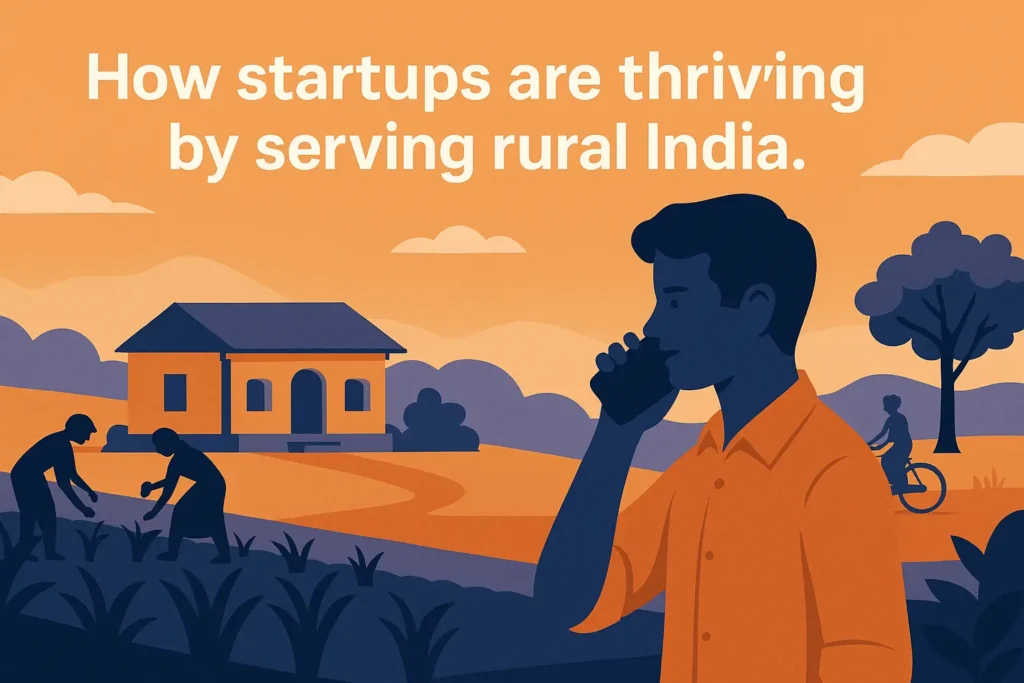Why Offline-First Startups Matter in India
India’s startup ecosystem has long been associated with tech-savvy, urban consumers. But a quiet revolution is taking place in rural areas, where internet penetration is still uneven. According to TRAI data, nearly 300 million Indians live in areas with limited or unreliable internet access. Offline-first startups are addressing this gap by creating products that work seamlessly without constant connectivity, enabling millions of new users to access services in education, agriculture, finance, and commerce.
What “Offline-First” Actually Means (Tech & UX)
Offline-first startups build products designed to work without internet access, storing data locally on the device and syncing it only when connectivity becomes available. This involves using progressive web apps (PWAs), local databases, background sync features, and lightweight user interfaces. Such designs ensure that the user experience remains smooth, even in low-bandwidth or no-network zones- a critical factor for rural India.
How Startups Serve Low-Tech and Feature-Phone Users
A large portion of rural India still uses feature phones or basic smartphones with limited storage and processing power. Offline-first startups often use SMS, USSD codes, IVR (Interactive Voice Response), and voice-based apps in regional languages to reach these users. For example, Gram Vaani has developed community radio and voice-based platforms to share agricultural and health information with rural populations that have never used traditional apps.
Business Models That Work Offline
Many offline-first startups integrate human networks with technology. Agent-led models, where local representatives act as intermediaries, have been successful for fintech and e-commerce startups. For instance, startups like DeHaat in agritech use local partners to collect farmer data offline and sync it later. Payment solutions include assisted digital wallets, cash-on-delivery systems, and hybrid transaction models that combine offline collection with online reconciliation.
Case Studies: Indian Startups Growing by Going Offline
Several Indian startups have scaled rapidly by embracing offline-first approaches. DeHaat connects farmers to suppliers and buyers while working in areas with spotty internet. Kisan Network enables offline crop listings, which sync to the cloud when a connection is available. Even in fintech, companies like Eko have enabled offline transactions through SMS-based authentication.
How AI, Caching, and Edge Compute Make Offline Smarter
Offline-first is no longer about static content. New advances in edge computing and AI allow devices to process data locally. Speech recognition in local languages can now happen on-device, enabling real-time transcription without internet. Caching techniques store frequently accessed information, making applications faster and more efficient. This not only improves user experience but also reduces data costs- a key concern in rural India.
Regulatory, Infrastructure, and Gender Challenges
Despite their potential, offline-first startups face challenges. Limited electricity access affects device charging. KYC (Know Your Customer) compliance rules can be complex to complete offline. There’s also a gender gap in mobile ownership and internet use, with women in rural areas significantly less likely to have access to smartphones. Startups are addressing these by setting up community kiosks, offering assisted onboarding, and conducting local digital literacy workshops.
Go-to-Market Tactics That Work Offline
In rural markets, trust and familiarity often matter more than flashy digital campaigns. Offline-first startups use community leaders, shopkeepers, and self-help groups as advocates. Demonstrations, training sessions, and local events help build credibility. By empowering local agents and providing them with offline-capable tools, startups ensure that services are accessible to even the most remote villages.
Measuring Impact: Metrics for Offline Success
Standard digital metrics like clicks or active users can underestimate the reach of offline-first products. Instead, startups track metrics such as successful data syncs, agent activity levels, and offline session duration. These measures provide a clearer picture of engagement in low-connectivity environments.
The Future: Offline-First as a Competitive Moat
As rural India’s connectivity improves, the need for offline-first design will remain. Startups that master this approach will not only reach untapped markets but also build resilience against network outages and infrastructure challenges. Offline-first is more than a workaround- it’s becoming a strategic advantage, especially in emerging economies where access and affordability are key.
Hi Friends, This is Swapnil Gupta, I am a Founder and Author at Startups Union.




